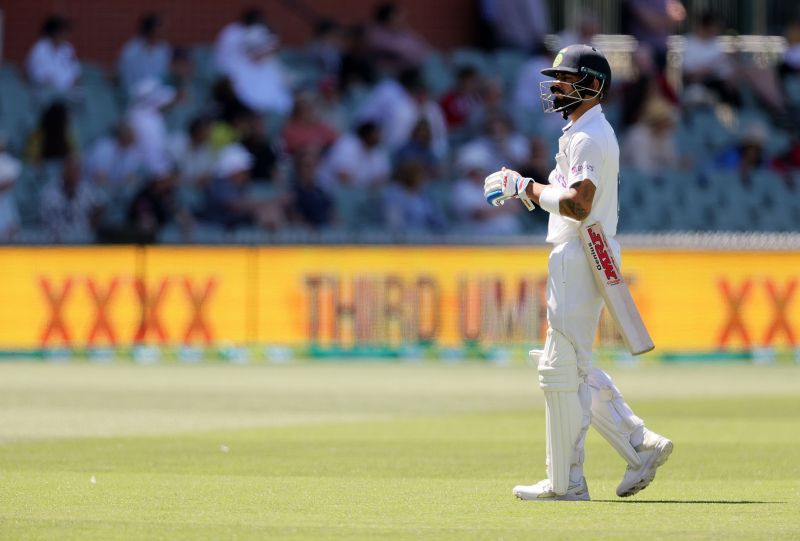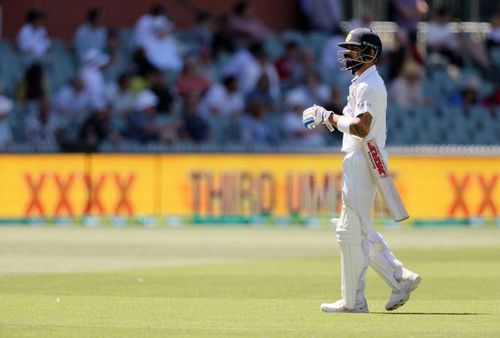
Is T20 cricket to blame for overseas Test debacles?

On 12th March, 2021, India and England will embroil themselves in another potentially titanic rendition of T20 cricket. The series, which will comprise of five encounters, has also assumed a preparatory role, considering the T20 World Cup is slated to take place in October and November in India.
Unsurprisingly, the excitement for the rubber has hit fever pitch, with both sides arriving high on confidence, at least as far as their fortunes in T20 cricket is concerned. To put things into context, England are the No.1 ranked outfit in T20 cricket, whereas the Indians got the better of Australia in their most recent assignment.
However, if international results are considered, both teams couldn’t have been at farther ends of the spectrum. India, despite losing the 1st Test of the 4-match series against England, bounced back to clinch the series 3-1, while the Three Lions capitulated after a promising start.
Even though a massive installment of T20 cricket beckons on the horizon, a lot of talk has surrounded the reverse England suffered during the Test series. More specifically, plenty have opined about prospective reasons on why the aforementioned took place, even mentioning that the Three Lions were simply not equipped enough to tackle India’s spin threat.
On a broader landscape, though, the series again highlighted the dominance home teams currently enjoy. Subsequently, one couldn’t help but wonder why overseas series defeats have become such a norm lately, despite there being a general consensus that cricketers have become more adaptable, owing to the numerous T20 leagues across the globe.
While T20 cricket has certainly had a positive effect on white-ball cricket, it has perhaps been detrimental to teams’ fortunes in away Test rubbers. Though that might seem a bit of an antithesis at first glance, there is enough evidence to support that argument.
Since 2010, T20 cricket has gained importance and has become an indispensable part of the cricketing ecosystem. The IPL, largely considered the premier T20 cricket competition on the planet, began in 2008 and has gone from strength to strength.

Australia, England, Pakistan and South Africa have also taken cues and have since introduced their own franchise T20 cricket tournaments, with those being accessible to players around the world. Consequently, plenty of overseas players have plied their trades in these leagues and have honed their skills in T20 cricket.
In fact, countless cricketers have used T20 cricket as a launchpad to propel themselves to stardom. The aforementioned list is pretty extensive when talking about the IPL and the same can also be said about competitions such as the Big Bash League, the Pakistan Super League and the T20 Blast.
However, during the same phase, the Test fortunes of teams, especially on away tours, has waned. And, quite spectacularly at that.
In the first part of the decade (2010-14), teams around the world participated in 81 Test series. Of those, 23 were won by the visiting sides, whereas they also drew 18 of those rubbers. On the other hand, outfits only lost 40 series, when playing away from home.
Since the start of 2015, though, those statistics have taken a massive dive. To put things into context, teams have contested 99 during the period, with home sides emerging victorious on 57 occasions. Additionally, there have only been 13 drawn rubbers, meaning that away outfits have only won 29 series out of a possible 99.
Though there might be a tendency to look at the winning percentage in both cases and rightly arrive at a conclusion, wherein the latter period nudges slightly ahead, it is imperative that the win-loss ratio is also taken into account.
Between 2010 and 2014, that ratio stood at 57.5, meaning that away teams won nearly three games for every five matches they lost. Post that, though, the ratio tallies to 50.8, suggesting that sides have won just one contest, for every two that they’ve lost.

However, the aforementioned statistics become a lot more skewed when talking about tussles between Australia, England, India, New Zealand and South Africa.
During the 2010-2014 period, these teams battled each other 26 times. Out of those, the away side won the series on 7 occasions, while drawing on five other instances. In the aftermath of that, though, the visiting teams have only won 7 of the succeeding 26 rubbers.
Though that tally seems pretty similar to the phase that preceded it, it is important to note that only one of the series since the start of 2015 has ended in a draw, meaning that the away outfit has lost 18 out of the 26 times they’ve contested.
Thus, these numbers hint that overseas series victories have become quite an aberration recently. And, there are plenty of reasons to shed light on why such a trend has come along, even though players have had more exposure in foreign environments.
Firstly, T20 cricket has played a massive role in how Test cricket is perceived. In blunter terms, T20 cricket has been a tad detrimental to the technique deployed by batsmen nowadays.
T20 cricket, owing to its topsy-turvy nature, has generated a considerable amount of fanfare and has become the most commercially viable cricketing format. Subsequently, there are a lot of financial incentives on offer for the players, meaning that youngsters have regularly prioritized T20 cricket, even if it has come at the cost of red-ball cricket.

Unsurprisingly, a host of players have been unable to adapt to different conditions and often find themselves unable to grind their way through arduous circumstances. Quite frequently, a bout of attrition is followed by a loose shot, which in T20 cricket might go unpunished, but personifies a death knell in the longest format.
Additionally, patience and perseverance have become premium commodities – something that can directly be attributed to T20 cricket and to an extent, can even be called one of its vices. Though one might be tempted to term batsmen as the sole remnant of that ailment, it is perhaps the bowlers who have struggled a lot more.
Even in the recently concluded series between India and England, the latter’s spinners were unable to bowl consistently. In the process, the Indians were allowed avenues to release the pressure and even transfer it.
In fact, four years ago, when the Three Lions made the trip to India, they fielded Adil Rashid and Moeen Ali – bowlers who have been regular fixtures in their white-ball setup. Unfortunately, though, both were quite erratic, meaning that despite producing wicket-taking deliveries, they were unable to impact the game significantly.

T20 cricket has changed the way Test cricket is played nowadays
Most tellingly, T20 cricket seems to have offered cricketers a false sense of security, especially when they encounter conditions that aren’t conducive to stroke-making. To put things into perspective, most global batsmen, apart from the Indians, play numerous leagues across the world, meaning that they are acclimatized to differing pitches.
However, in T20 cricket, the surfaces don’t undertake great responsibility, for it rarely changes in 40 overs. Also, on a majority of occasions, attack becomes the best form of defence – something that prompts people to assume that batsmen have become used to batting on such tracks.
The truth, though, remains that their mental and technical faculties aren’t tested completely in the frolicking confines of T20 cricket. Furthermore, there aren’t many red-ball competitions that players can play around the world – again, something that Joe Root highlighted in the aftermath of the 4th Test.
And, unsurprisingly, when confronted with perilous challenges in red-ball cricket, those deficiencies metamorphose into incredibly larger flaws.
Thus, there seem to be enough facets suggesting that T20 cricket could be blamed for teams wilting in Test cricket, especially away from home. While one might be cajoled into not establishing a direct correlation, the narrative is becoming pretty hard to ignore entirely, too.
The only anomalies, if one can rummage deep enough, would be India’s twin successes against Australia in Australia. However, the Indians are the only set of cricketers who don’t play any franchise T20 cricket, apart from the IPL, of course.
The players struggling, are those from Australia and England, who have made themselves household names in T20 cricket and have become accustomed to a style of play that just isn’t tenable in the longest format.
A few days ago, when the Indian spinners spun a web around the English batsmen, many were left flabbergasted at the visitors’ lack of application. Sunil Gavaskar, too, criticized Jonny Bairstow (a reputed T20 cricket specialist) harshly, stating that the latter looked uninterested.
Also Read: 'Uninterested' Jonny Bairstow's chance to show he cares
After digging deeper, there is adequate evidence to portray that T20 cricket might’ve had a negative impact on Test cricket, after all. Not just in terms of the adverse effect it has had on batting techniques, but also when discussing the mental element of the game.
And, perhaps that, in isolation, preempts why so many top-quality teams huff and puff when travelling overseas. Though away fixtures have always been a much tougher nut to crack, the discrepancy has been growing manifold lately.
Thus, at least on that count, it feels a bit of a travesty that T20 cricket, which has changed the game for the better, has triggered a pattern that has become a serious blot for most outfits.
T20 cricket has always been termed a double-edged sword anyway, hasn’t it?
Also Read: Is it time we stopped fantasizing about hundreds in cricket?